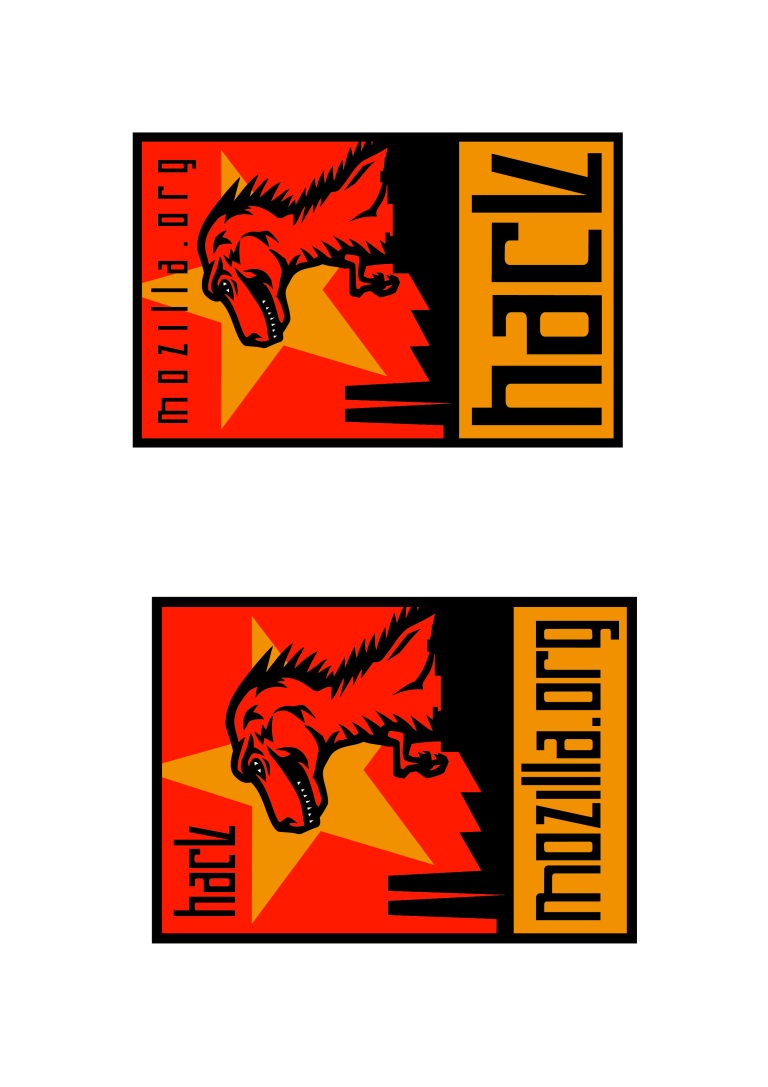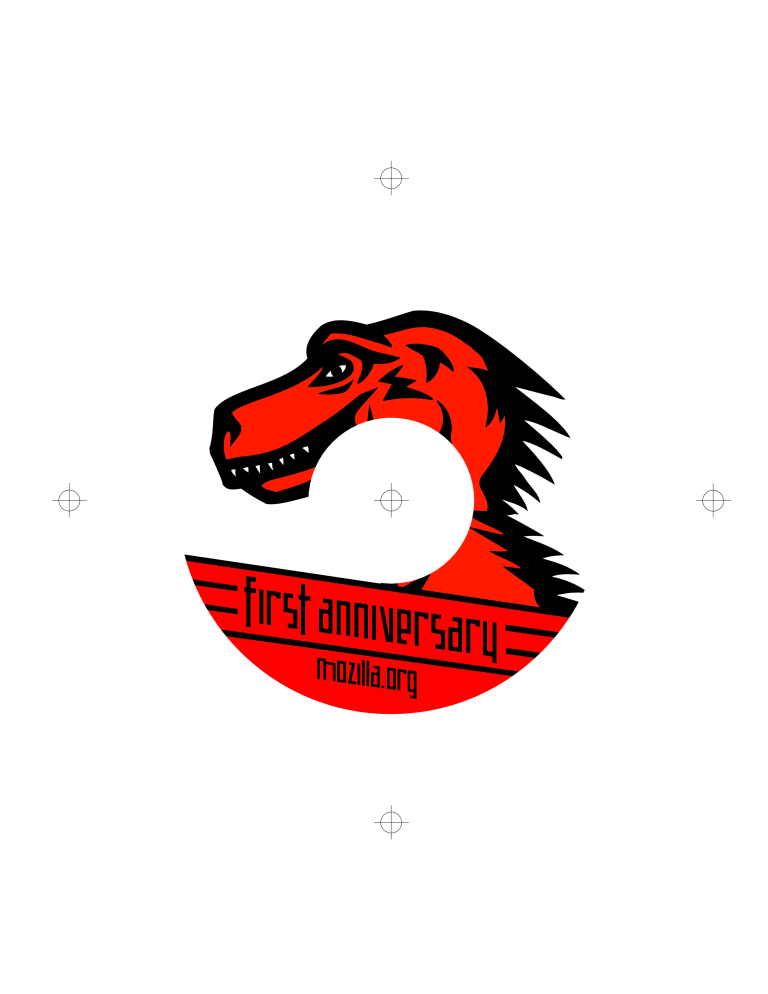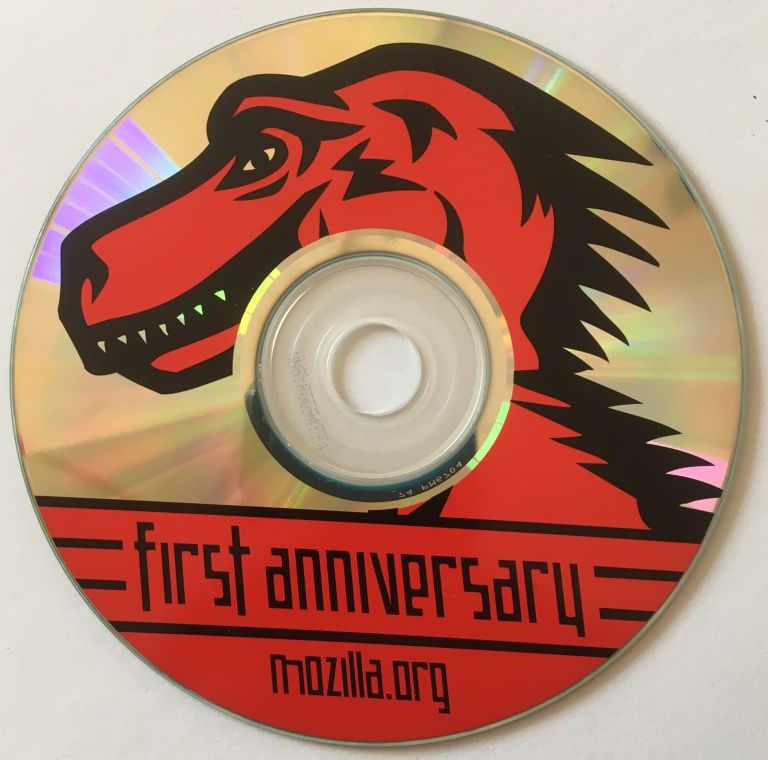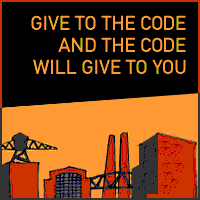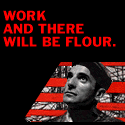As I explained in some detail in my 2016 article "They Live and the secret history of the Mozilla logo", I commissioned this artwork from Shepard Fairey to use as the branding of the newly-founded mozilla.org and our open source release of the Netscape source code, which eventually became Firefox. This happened in March 1998.
- I am 100% certain that we (Netscape) purchased the artwork outright.
- I am 99% certain that some time in 1998 or 1999, the artwork was open sourced under the terms of the then-new Netscape Public License.
However, I find that I can't actually prove either of these things. Can you?
I see this document that was on the Mozilla.org web site in 2005 that asserts that, though the rest of the web site is CC BY-SA 2.0, the red dinosaur is trademarked.
I don't believe that's true. I think that's lawyerly overreach. I believe the dinosaur had already been released and could not be clawed back in this way.
But what do I know. Anyway, here are all of the original vector images. Come at me.
These are the first batch of drawings that Shepard did for us. The original files were PostScript, but I have converted them to PDF and PNG for modern sensibilities:
You probably didn't know the dinosaur had legs!
Here's the artwork for the CD we gave away at the first anniversary party in 1999.
And here are some "Netscape Now!"-style banners that some other division inside Netscape commissioned a different design firm to make, shortly thereafter. (Why they didn't just get Shepard to do it, I don't know.) Some of these were once hosted on mozilla.org.
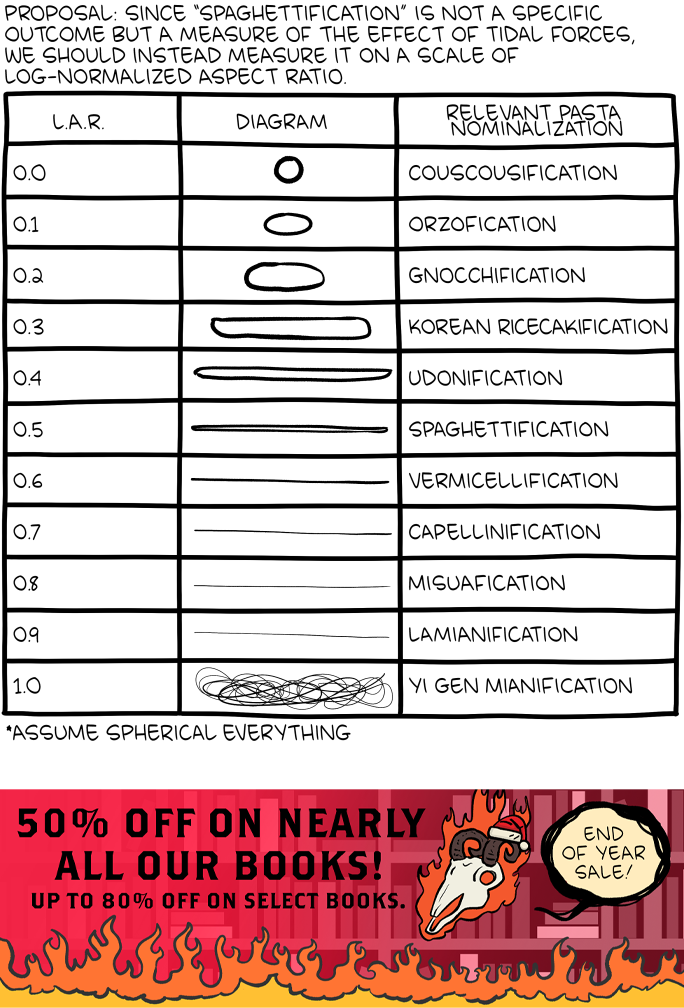
Click here to go see the bonus panel!
Hovertext:
Anyone complaining about the math just needs bigger or smaller pasta.
Today's News:
Nieuwe spellen voor de Philips Videopac werden gepresenteerd op de Firato tentoonstelling in 1982.
Bron: Polygoonjournaal, 1982
Collectie Beeld & Geluid
Also: https://www.girlgeniusonline.com/comic.php?date=20081103
(No I didn't remember this, saw someone else link it elsewhere)

